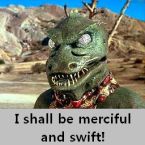Canoerebel
Posts: 21100
Joined: 12/14/2002
From: Northwestern Georgia, USA
Status: offline

|
quote:
ORIGINAL: MakeeLearn
quote:
ORIGINAL: geofflambert
I'm trying to grow a red buckeye tree. It's a relative of chestnut trees but the fruit is unpalatable to humans, probably gorns as well, though squirrels apparently love them and I got squirrels. I planted it because it supposedly is a favorite of hummingbirds. I ordered it as a bare root tree with the roots wrapped in damp paper towels. The bud on the top of the trunk never showed any life so I pruned it off. A new one has appeared near the top and I have great hopes for it. But I would recommend never buying bare root trees, get them with the root ball in soil and burlap.
Ive got several Chinese chestnuts planted. there are several places in the US that have Chinese/American chestnuts planted in effort to bring back the American chestnut. I remember some are at Dollywood.
I planted 2 dawn redwood trees at the same time. They arrived bare root and doing great. Being one of the oldest species I imagine they are very hardy.
The American chestnut (Castanea dentate) is a magnificent tree that once comprised about 17% of the eastern American forest. The nuts are edible. The tree was nearly eradicated by a parasite fungus (Endothea parasitica) introduced into the United States at a New York botanical garden around 1904. The fungus is spread airborne. By the 1940s, essentially all American chestnuts had been killed. But the tree has a remarkable ability to re-sprout from it's root or lower trunk. It does so prolifically, but the sprouts are killed, in turn, by the fungus when they reach the size of about the thickness of a man's for-arm. Some of these sprouts are big enough to bear seeds.
Beginning some 30 years ago, scientists began crossbreading American chestnut with Chinese chenstnut (Castanea mollisima, if memory serves), which is resistant to the fungus. The hybrids have successfully incorporated the resistance at about 15/16ths American and 1/16th Chinese. These hybrids are being planted across the eastern US now.
Dawn redwood is a native of China and has the most lyrical scientific name ever: Metasequoia glyptostroboides. :)
P.S. I hold a BSFR (bachelors of science in forest resources) from the University of Georgia, 1983.
|
 Printable Version
Printable Version













 It was a minor, misunderstanding problem. It may even be in the Japanese Sigintel
It was a minor, misunderstanding problem. It may even be in the Japanese Sigintel


 New Messages
New Messages No New Messages
No New Messages Hot Topic w/ New Messages
Hot Topic w/ New Messages Hot Topic w/o New Messages
Hot Topic w/o New Messages Locked w/ New Messages
Locked w/ New Messages Locked w/o New Messages
Locked w/o New Messages Post New Thread
Post New Thread